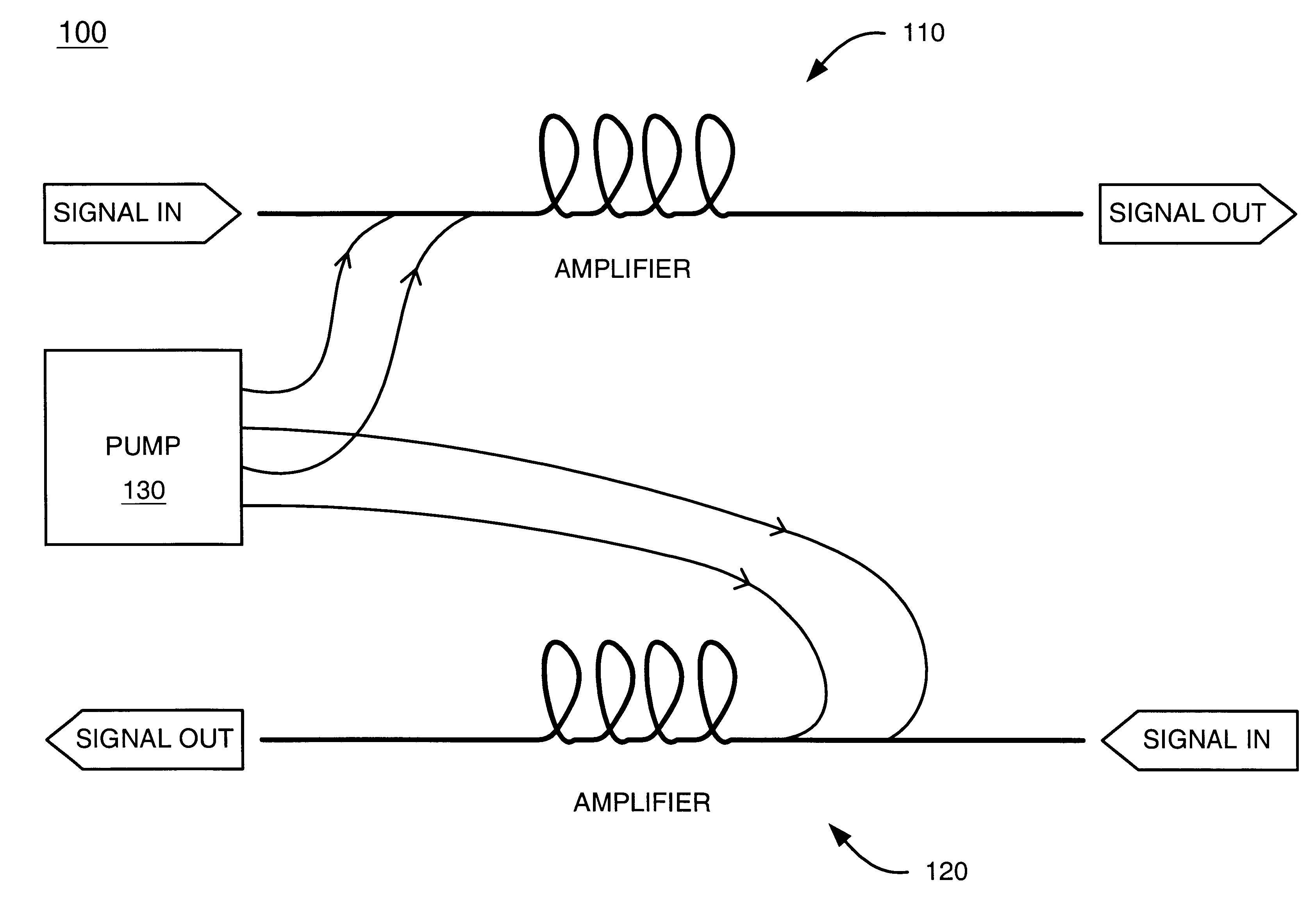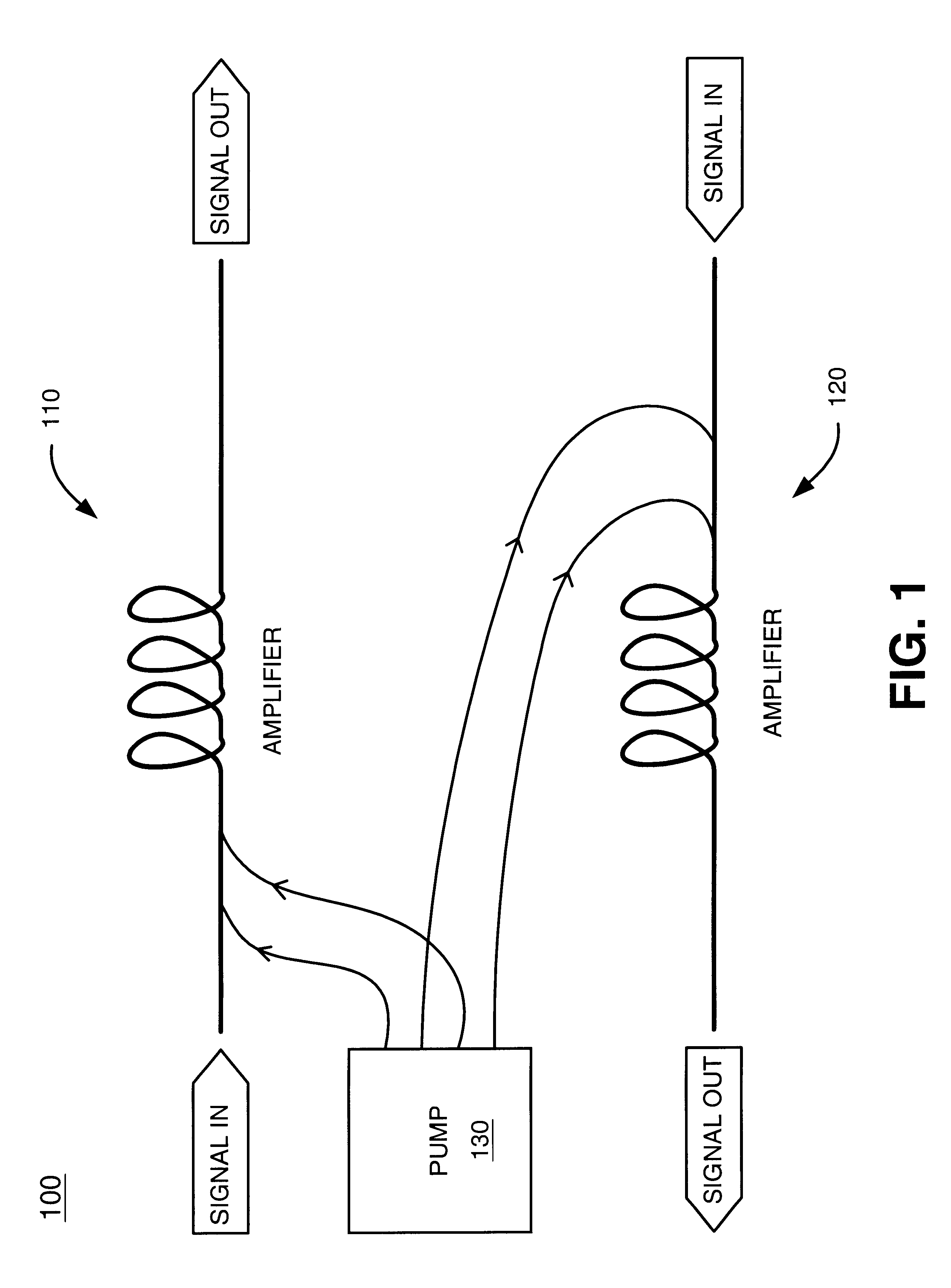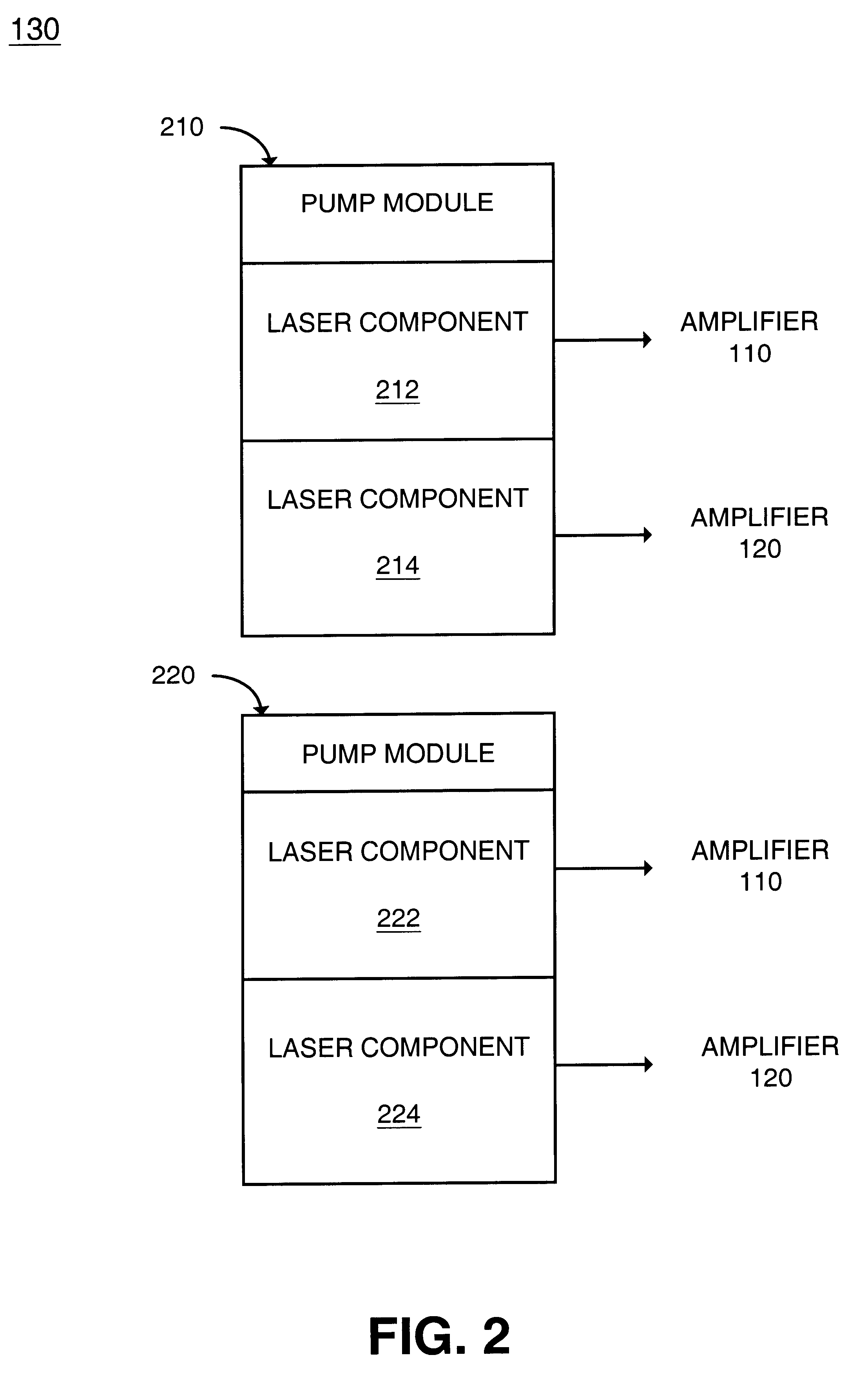Systems and methods for detecting fault conditions and detecting and preventing potentially dangerous conditions in an optical system
a technology of optical system and fault condition, applied in the field of optical fiber system, can solve problems such as irreparable damage to the connector, connector replacement, and danger, and achieve the effect of preventing the damage of the connector and detecting the fault condition
- Summary
- Abstract
- Description
- Claims
- Application Information
AI Technical Summary
Benefits of technology
Problems solved by technology
Method used
Image
Examples
first embodiment
Exemplary Operation (First Embodiment)
FIG. 5 is a flowchart of exemplary processing for detecting an imperfect connection in a manner consistent with the present invention. Processing begins when the laser 310 (FIG. 3) begins to power up [step 510]. At this time, the laser 310 emits a light signal of low power. Over time, the laser 310 ramps up to emit a light signal of high power, such as 100-500 mW.
As the laser 310 ramps up, it transmits the light signal to the coupler 350 via the pump fiber 320A. Assume that the coupler 350 has a 1 percent tap. The coupler 350 transmits 99 percent of the received signal to the connector 330 over pump fiber 320B and the remaining 1 percent of the signal on the terminated fiber 342 [step 520]. If the connection provided by the connector 330 is imperfect through, for example, an imperfect mating of fibers or surface contamination on the fiber ends, a portion of the signal transmitted on the pump fiber 320B reflects back from the connector 330 [step ...
second embodiment
Exemplary Operation (Second Embodiment)
In general, the second embodiment operates as follows. The backreflection detector 770 receives any backreflections of the pumping light signal. Such backreflections of the pumping light signal may be generated by such things as a degraded or failed (imperfect) connector / component 750 or fiber 795. As described above a connector / component 750 may be degraded by a variety of factors such as contamination. Fibers may be damaged in a variety of ways such as by cutting. In addition, disconnecting a connector or fiber from a component in the system will cause backreflections of the pumping light signal and create a condition potentially hazardous to humans or components.
The invention detects these pumping light backreflections by utilizing the backreflection detector 770. The signal from backreflection detector 770 is fed to controller 790 which then utilizes this signal to determine whether the backreflection is significant enough to warrant precau...
PUM
 Login to View More
Login to View More Abstract
Description
Claims
Application Information
 Login to View More
Login to View More - R&D
- Intellectual Property
- Life Sciences
- Materials
- Tech Scout
- Unparalleled Data Quality
- Higher Quality Content
- 60% Fewer Hallucinations
Browse by: Latest US Patents, China's latest patents, Technical Efficacy Thesaurus, Application Domain, Technology Topic, Popular Technical Reports.
© 2025 PatSnap. All rights reserved.Legal|Privacy policy|Modern Slavery Act Transparency Statement|Sitemap|About US| Contact US: help@patsnap.com



